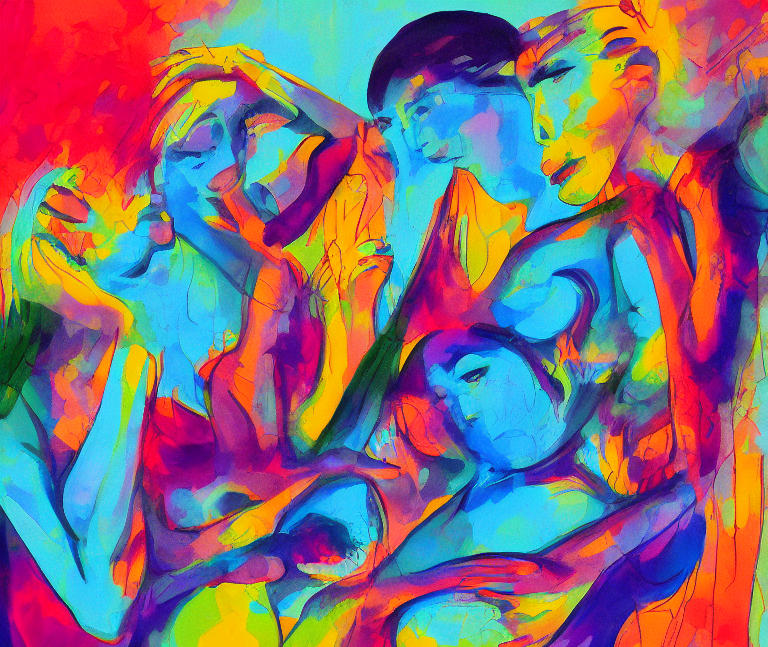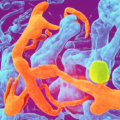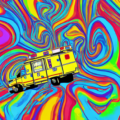Despite the fact that MDMA is increasingly mentioned in the info spatial as a medicine drug, and Molly is far from first place in terms of the number of consumers today, this substance has a huge number of admirers, a separate subculture, and many sides effects that can be easily avoided by applying our favorite approach Harm Reduction for MDMA.
What is MDMA?

MDMA (3,4-methylenedioxymethamphetamine) is a synthetic recreational drug that is known by several street names, including Ecstasy, and Molly. It is a psychoactive substance that alters a person’s mood, perception, and behavior.
MDMA primarily affects the brain by increasing the activity of three neurotransmitters: serotonin, dopamine, and norepinephrine. Serotonin is responsible for regulating mood, appetite, and sleep, while dopamine and norepinephrine are associated with reward and arousal. MDMA causes a surge in the release of these neurotransmitters, resulting in feelings of euphoria, increased empathy, and heightened sensory perception.
Compared to other recreational drugs, such as cocaine or amphetamines, MDMA is unique in its ability to cause a profound sense of emotional openness and connection with others. This is likely due to its effects on serotonin, which is thought to play a crucial role in social behavior and bonding.
However, MDMA also carries significant risks, particularly if used frequently or in high doses. Over time, repeated use of MDMA can lead to depleted serotonin levels in the brain, which can cause a range of negative side effects, including depression, anxiety, and sleep disturbances. Additionally, MDMA use can increase body temperature and heart rate, which can be dangerous in certain situations, such as during intense physical activity or in hot environments.
How to reduce the harm from MDMA?

Harm Reduction for MDMA use aims to minimize the negative consequences associated with the use of this drug. Here are some of them:
Educate yourself about the drug
Before taking MDMA, it is important to educate yourself about its effects, dosage, and risks. This can help you make informed decisions about its use and reduce the chances of negative consequences.
Read harm reduction resources, watch videos on the topic, listen to podcasts, discuss with friends, and tell them what you have learned. Here are a few of my favorites:
Choose a right product
All other things being equal, MDMA in crystal form is less likely to be with impurities. Whereas pills (ecstasy) may contain neutral or additional active substances (stimulants) to enhance the effect. It is worth paying attention to special resources where data on the composition and dosages of certain tablets are collected. A good example is the KnowDrugs app.
Test your stuff
Testing your MDMA before taking it can help you determine if it is pure and free of potentially harmful contaminants. Later I will definitely write a separate article about MDMA test kits, but for now, I will leave a few links where they can be purchased:
- testkitplus.com – USA and Canada
- protestkit.eu – Europe Union
- reagent-tests.uk – United Kigdom
- testkitlogic.com.au – Australia
Find safe environment
MDMA should only be taken in a safe environment where you feel comfortable and secure. This could be at home, with trusted friends, or at a licensed venue with medical professionals on hand.
Start with a low dose
Starting with a low dose of MDMA can help reduce the risk of negative side effects such as anxiety, nausea, and vomiting. The recommended starting dose is 50-120 mg.
The dosage of MDMA correlates well with the weight of the one who is going to take it. There is an average formula that allows you to calculate the average dose of MDMA. You can calculate the average dosage of your weight with certain conditions on the website mollymeasure.com
Stay hydrated
MDMA can cause dehydration, so it is important to drink plenty of water while taking the drug. However, drinking too much water can also be dangerous, so it is important to strike a balance.
The best option would be to have clean cold gas-free water on hand throughout the trip and drink it in small portions. Drinking a lot of water in large gulps at once is dangerous when using MDMA. It is also worth excluding soda and sugary drinks.
Take breaks
Taking regular breaks from MDMA use can help reduce the risk of negative consequences such as addiction and neurotoxicity. It is recommended to take a break of at least one 1-2 months between MDMA uses.
MDMA forms the least danger to health with a pattern of use 3-4 times a year.
Seek help if needed
If you experience any negative side effects or have concerns about your MDMA use, it is important to seek help from family, friends, a medical professional or an addiction specialist.
MDMA and Sexual Health

When MDMA is consumed, it increases the release of serotonin and other neurotransmitters in the brain, leading to feelings of euphoria, increased sociability, and emotional openness. However, this flood of neurotransmitters can also cause a range of physical and psychological effects, such as:
Increased sexual desire: MDMA can increase sexual desire, arousal, and pleasure, which can enhance sexual experiences for some users.
Impaired sexual function: MDMA can impair sexual function in some users, including decreased libido, difficulty achieving or maintaining an erection, and difficulty achieving orgasm. This can lead to sexual frustration and disappointment for both the individual and their sexual partner and further contribute to sexual dissatisfaction.
Risky sexual behavior: MDMA use can lead to risky sexual behavior, particularly in situations where individuals are using the drug in a social or party setting. The drug can impair judgment and increase feelings of intimacy and trust, which can lead to engaging in unprotected sex or sex with multiple partners. This can increase the risk of sexually transmitted infections (STIs) and unintended pregnancy.
Dehydration: Again, MDMA use can cause dehydration, which can lead to vaginal dryness and discomfort during sex.
Interference with medication: MDMA can interfere with some medications used to treat sexual dysfunction, such as sildenafil (Viagra), which can increase the risk of negative side effects. From the side of the cardiovascular system in the first place.
Long-term effects: After MDMA use, some individuals may experience a range of physical and psychological symptoms, collectively known as a “comedown.” These symptoms may include depression, anxiety, and fatigue, which can further impact sexual function and libido. Additionally, regular and prolonged use of MDMA can lead to long-term changes in brain chemistry and sexual function.
To mitigate these risks, individuals who choose to use MDMA should take precautions to protect their sexual health. These may include using barrier methods of contraception, such as condoms, to reduce the risk of STIs and unintended pregnancy. It is also important to have open and honest communication with sexual partners about drug use and sexual practices.
And of course, to reduce the risk of negative consequences on sexual health, harm reduction strategies and tactics which we talked about above should be employed when using MDMA.
What are the latest MDMA trends?

The average MDMA content and purity of powders remained stable in 2020. MDMA tablets seized in Europe contained an average of 125 to 200 mg of MDMA, while the average purity of seized MDMA powders ranged from 43% to 95%. Drug-checking services in 17 European cities reported an average amount of 180 milligrams of MDMA per tablet in 2020, with an average purity of 79%.
Please note that 125 to 200 mg of MDMA are very large dosages and it is dangerous to take even one whole tablet with such an amount of active substance. What to say about a few pills.
Between 2015 and 2021, surveys conducted by 26 EU countries revealed that approximately 1.9 million young adults (15-34 years) used MDMA in the last year, accounting for 1.9% of this age group. Prevalence estimates were higher for those aged 15-24 years, with 2.2% (1.0 million) of this age group estimated to have used MDMA in the last year.
In 2020, MDMA was the sixth most common drug reported by Euro-DEN Plus hospitals, present in 6% of acute drug toxicity presentations. The number of presentations involving MDMA decreased to 376 in 2020, which was lower than 661 in 2019.
According to the 2021 National Survey on Drug Use and Health, approximately 2.2 million people aged 12 or older reported using MDMA in the past 12 months in USA. Moving on to 2022, the statistics reveal that an estimated 0.6% of 8th graders, 0.7% of 10th graders, and 1.4% of 12th graders reported using MDMA within the past 12 months. These numbers suggest that while MDMA use among young adults remains a concern, there may be a downward trend in the usage of the drug among this population.
It is estimated that around 20 million people worldwide used “ecstasy”-type substances in the year 2020. However, various surveys conducted during the pandemic suggest that there has been a decrease in the usage of such substances, which can most likely be attributed to the closure of venues like nightclubs where they are commonly consumed.
Recent trends in MDMA use suggest that it continues to be popular in the EDM and rave music scenes. However, there has also been a growing interest in the therapeutic potential of MDMA, particularly after the FDA granted Breakthrough Therapy Designation for MDMA-assisted psychotherapy for PTSD in 2017.
We also remember that recently Australia greenlighted MDMA and shrooms for medical use.
Final Thought

Today MDMA is probably one of the most studied and safe recreational substances of the euphoretic-stimulant class. With the right approach, it can give a person a very positive experience, and in combination with a medical and scientific approach, it promises to cure certain conditions.
However, lack of knowledge, high dosages, and misconceptions about how to use still lead to negative and even sad consequences, which are very easy to avoid by applying the principles of Harm Reduction for MDMA.
✔️
This marks the finish of today’s session. It is my hope that this piece was enlightening.
If you desire to advance the growth of this blog, I suggest the following actions:
- Follow my Twitter.
- Circulate a link to this article among your associates.
- Give recognition to this blog on relevant platforms or discussion groups.
Should you identify any necessary additions or corrections in this article, feel free to initiate a dialogue with me via Contact Form. I am always open to communication.
I express my gratitude for your valuable time and consideration 💊




